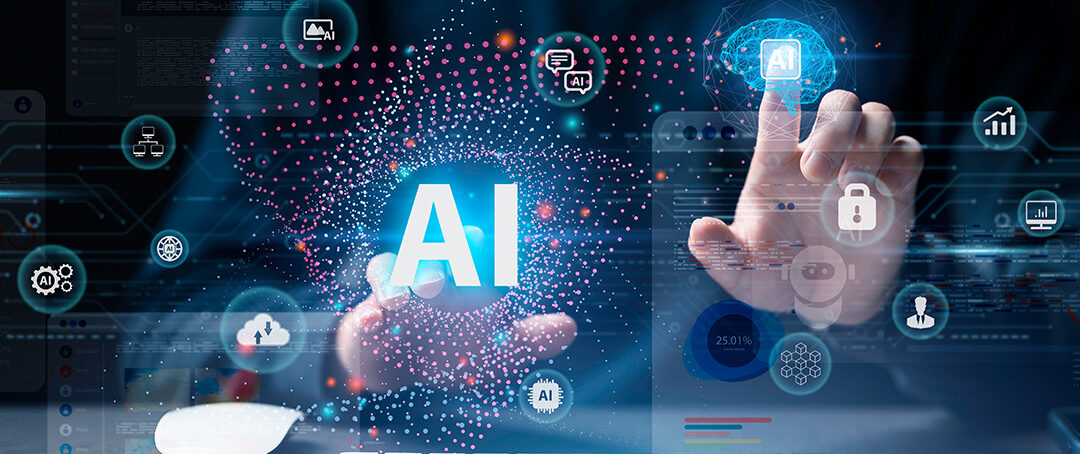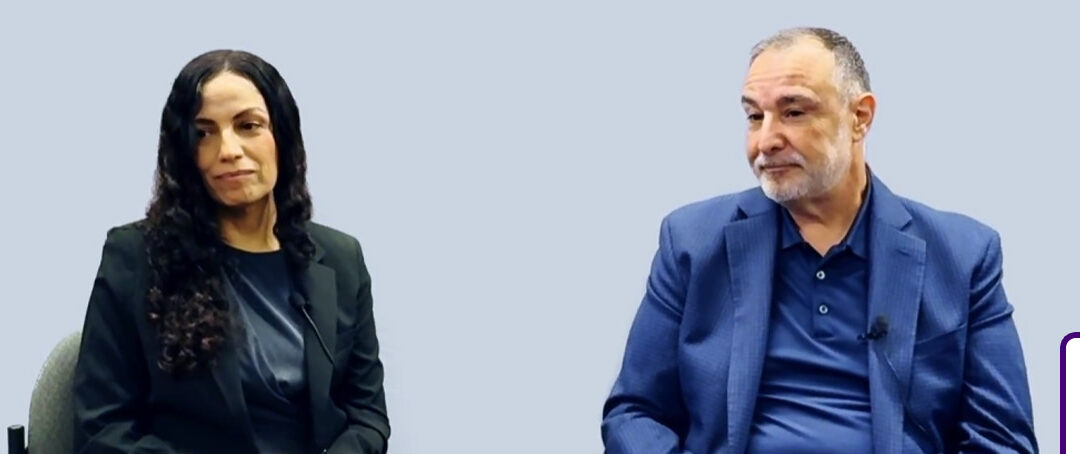At SHARE Cleveland 2025, BMC’s Jeremy Hamilton sat down with Planet Mainframe to discuss the biggest shifts in mainframe operations. From observability and SRE to the practical use of generative AI, Hamilton shared why the platform is evolving faster than ever, and what that means for the next generation of mainframers.
The Next Chapter of the Mainframe
At SHARE Cleveland, the buzz around the mainframe was louder than ever, and not just because of the Rock & Roll Hall of Fame vibes. Jeremy Hamilton, Global Director of Technology Solutions at BMC Software, joined Planet Mainframe’s Amanda Hendley to discuss the forces reshaping operations. Hamilton shares why the platform is in the middle of a cultural and technical transformation.
Hamilton didn’t mince words or hide his excitement: the mainframe is at a crossroads where DevOps, AIOps, and generational shifts in the workforce all collide. That convergence is rewriting the rules of how organizations think about operations.
For example, he pointed out that site reliability engineers (SRE) are relatively new. “You never really heard about them,” Hamilton said. “Now, here at SHARE, there are at least half a dozen sessions with SRE in the title.”
Observability in Action
In reflecting on the direction of the mainframe, Hamilton focused on observability.
Observability, he explained, provides the wide-angle view that regular monitoring never could. It’s not about staring at one key performance indicator; it’s about asking if the system as a whole looks normal, or if something subtle is about to turn.
“Observability is that ability to see all across the platform, but also understand what is happening, and know if it’s normal or not.”
The mainframe’s tight, closed-loop design means everything depends on everything else. This is both a blessing and a curse, since a hiccup in a database can cascade into transactions, APIs, or other applications.
For Hamilton, the major gain from observability is real-time context. Monitoring was always real-time, but it looked “inside out.” Observability looks across the system, and can flag whether what’s happening is expected or outside the normal bounds.
The Skills Gap Gets a Boost
Hamilton shared a story about his early days: “When I first started, I could barely log on to the platform, and I had to call my mentor just to unlock my user ID.” His point was that every small mistake from a newbie pulled a seasoned operator away from mission-critical work.
In contrast, today, observability tools mean newcomers don’t have to run to their mentors for every concern. They can see context, pinpoint issues, and move further down the road toward resolution on their own. That shift, Hamilton argued, helps both sides: it speeds up the learning curve for new mainframers and frees up veterans for higher-value work.
Where to Start with Observability
When asked where organizations should start with observability, Hamilton’s advice was clear: start with a baseline. Map out what visibility you have today – CICS, applications, subsystems, APIs – and then identify the blind spots. From there, the right solution depends on culture as much as technology.
“You’ll have systems programmers who’ve done things the same way for decades,” he said. “And you’ll have someone brand new who wants to leap straight into observability. You’ve got to bring those cultures together.
How AI Fits the Future
Hamilton shared another early-days experience that continues to influence his work. He taught an abend analysis class early in his career, when deciphering cryptic SOC codes meant flipping through manuals and pestering mentors. One participant in the classroom asked if he knew what a “SOC 4” was. After rushed research over lunch and feeling proud of learning something new, Hamilton shared his answer to the class. There was a pause, and then he was told by an experienced participant, “What’s a sock for? It’s a sock for your foot.”
That kind of trial-and-error learning, he argued, is ripe for disruption by generative AI.
“The next biggest thing in the mainframe is Gen AI coming on and being able to explain things in a human-readable fashion.”
In his view, large language models trained on company-specific terminology will make troubleshooting faster and less intimidating for the next generation. Looking further ahead, Hamilton sees agentic AI diagnosing problems and even automating fixes. A fully “lights-out” data center might still be a stretch, but the path is now visible.
The Takeaway
For Hamilton, the story of mainframe operations is a tale of a platform in motion. Observability, SRE, and AI are reshaping how organizations manage complexity, how new talent ramps up, and how veterans spend their time. And at the core of it is a cultural shift: blending the experienced guard with newcomer energy.
The future is bright, and, according to Hamilton,the sky is the limit for mainframes.
BMC Observability with Jeremy Hamilton
Read the Transcription
What trends are you seeing in operations today?
It’s a really exciting time to be on the platform because there’s so much change happening. We’re seeing the growth of DevOps, the arrival of new technologies like AIOps, and a shifting workforce—all of which are reshaping how organizations approach operations.
One of the biggest trends I’ve noticed is observability. Customers are using it to shorten their meantime to detection and repair, which is critical in today’s fast-paced environments. Another big shift is Site Reliability Engineering (SRE). Just a couple of years ago, no one in the mainframe space was really talking about SRE. But at this SHARE conference alone, there are five or six different sessions that focus on it. That shows just how quickly the industry is evolving.
What does observability mean to you, and how is it achieved on the mainframe?
The mainframe is what I call a closed-loop system—every piece relies on other pieces. That’s both a blessing and a curse. Observability is about stepping back and getting an outside-in view of the whole system. Instead of just tracking a single KPI, it’s about asking: What’s the overall state of my environment? And is that normal?
For example, a small change in the database side might ripple into the transaction side. Observability helps you figure out if that’s expected or something to worry about. Real-time monitoring has always existed, but that’s more inside-out—looking deeply at subsystems. Real-time observability is different. It’s the ability to look across everything happening right now, in the moment, and understand whether that’s good or bad. That’s something brand new for the mainframe.
How is real-time observability on the mainframe different from traditional monitoring?
Real-time observability is relatively new for us. We’ve always had real-time monitoring, but that usually meant looking from the inside out—digging deep into KPIs within a specific subsystem. Observability takes it a step further. It’s the ability to see what’s happening right now across the entire platform and then understand whether that activity is good or bad.
What does observability mean for the next generation of mainframers?
I see two groups here: newer mainframers who may not have much experience yet, and tenured veterans who have all the knowledge but little time. Observability helps both. For newcomers, it speeds up the learning curve and lets them add value much faster. They don’t have to run to a mentor for every single question, because the system itself is showing them where issues might be.
I remember when I first started, I could barely log onto the platform. I’d have to call my mentor just to unlock my user ID, which meant interrupting his work so he could stop, help me, and then refocus on his own tasks. With observability tools, those kinds of things don’t need to pull senior staff away anymore. It empowers the newer generation to figure things out on their own, while also giving veterans some breathing room.
Where should organizations start if they want to adopt observability?
I get that question a lot, and my advice is always to start at ground zero. First, figure out what you can already see in your environment without adding anything new. Can you see everything happening in CICS? In your applications? In other subsystems? What about the non-traditional access points—like APIs or WebSphere connecting into DB2?
Once you have that “state of the union,” you can figure out what’s missing and what you need to move toward observability. From there, it depends on your organization. Some solutions you build yourself, some rely on proprietary data, and others come ready-made. The important thing is choosing what fits your culture and your needs.
But it’s not just technical—it’s cultural. You might have a systems programmer who’s been doing things a certain way for decades and feels like they’ve got it all covered. Then you’ve got someone brand new who doesn’t have that history and is more open to change. The challenge is bringing those two worlds together. Observability, when done right, can bridge that gap.
What’s next for the mainframe?
Honestly, the sky’s the limit. Generative AI is already making it easier to understand and solve problems. Let me give you a quick story. My first role on the mainframe was teaching a class on abend analysis. When an application crashed, you’d get a dump and had to figure it out. The dump we were looking at was a SOC 7, which meant bad data. I was explaining it in detail when someone in the back raised their hand and asked if I knew what a “SOC 4” was.
I didn’t, so I spent my entire lunch break researching it—called my mentor, dug everywhere I could, and came back with the answer, proud as could be. I explained it to the room, and the guy raised his hand again and said, “No, I mean a sock for your foot.” The whole room laughed. That was my introduction to mainframe humor and, frankly, to the challenge of not always knowing where to find answers.
That’s why I think GenAI is such a game-changer. It can take complex technical issues and translate them into plain, human-readable explanations—so the next person in my shoes won’t waste an hour hunting for an answer that doesn’t exist.
Looking forward, I see agentic AI being able to detect issues, identify root causes, and even automate the fix. We’re not quite at the point of “lights out” mainframes yet, but AI is pushing us closer. And that’s really exciting.









0 Comments